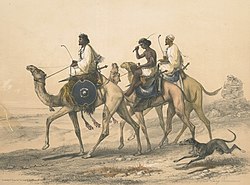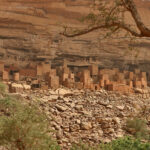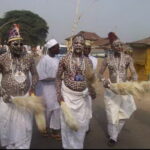The Ababda (Ababa) people, a subgroup of the Beja ethnic group, have a rich history and cultural heritage that spans thousands of years. Living in northeastern Sudan and southeastern Egypt between the Nile and the Red Sea, the Ababda are the northernmost of the Beja peoples. This pastoral community has traditionally wandered in small family groups in search of pasture for their livestock, which includes sheep, goats, and camels. Their portable dwellings, woven from goat hair, reflect their nomadic lifestyle.
Origins and Self-Identity

The Ababda people emerged as a distinct ethnic group in the sixteenth century, despite their presence in the region for over 4,000 years. They have deep roots in the area and have maintained a distinct identity within the broader Beja community. According to their tribal narratives, the Ababda people trace their origins to the Arab people from the Hijaz, descending from Zubayr ibn al-Awwam following the Muslim conquest of Egypt. Today, the Ababda population exceeds 250,000 people.
Livelihood and Cultural Practices


Traditionally, the Ababda people have been pastoralists, relying primarily on dairy products, particularly camel’s milk, as well as meat from their livestock and small amounts of grain. They also engage in sorghum cultivation in wadi beds, planting after rainstorms and tending to the crop until harvest. Despite being Muslims, the Ababda people retain elements of pre-Islamic customs in their religious practices. In recent decades, they have become increasingly acculturated into Egyptian Arabic society, undergoing notable changes in their way of life.
Language and Linguistic History
The language spoken by the Ababda people has undergone significant evolution and transformation. Today, virtually all Ababda communities speak Arabic, with no oral tradition of having spoken any other language prior to Arabic. However, there are historical accounts and studies that suggest the possibility that the Ababda may have spoken a dialect of Beja before adopting Arabic. These accounts indicate a complex linguistic history and a transition from their original language to Arabic over time. The process of language shift and adoption sheds light on the intricate cultural and historical dynamics within the Ababda community.
Historical records from travelers, linguists, and researchers provide fascinating insights into the evolution of the Ababda language. While some sources suggest that the Ababda people spoke a distinct Beja dialect, others indicate a fluid bilingualism and multilingualism among the Ababda, involving Arabic and potentially other languages such as Nubian Bedouin and a language similar to the Bishari dialect. The linguistic history of the Ababda people adds layers of complexity to their cultural heritage and underscores the interplay between language, identity, and historical transformations.
Conclusion
The history of the Ababda people is a testament to their resilience, cultural distinctiveness, and ability to adapt to changing social, economic, and linguistic landscapes. Their journey from ancestral origins to contemporary challenges reflects a dynamic interplay of tradition, adaptation, and cultural evolution. By delving into the history of the Ababda people, we gain valuable insights into the intricate tapestry of human civilization, language dynamics, and the enduring heritage of the Beja ethnic group in northeastern Africa.


